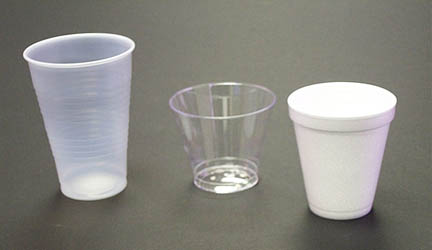Plastics
By: Areta
To start of plastic is a “synthetic organic polymer” ( Anne Marie Helmenstine, ThoughtCo.) Meaning their chemical composition is made up of carbon and hydrogen. Plastics are made out of polymers, though polymers have a chemical structure of that include carbon and hydrogen, there are able to add other molecule structures to make different types of plastics. Polymers are unsaturated, meaning during fabrication other bonds can be added and break the double bond, making it complete. These added molecules, structures, can be known for colorants, stabilizers, fillers, and reinforcements. These additives can affect the physical structure, chemical, and usage as well as cost. Examples of different plastics, their chemical formulas, and their use include;
High-density polyethylene—HDPE: (HDPE was first produced in England and became famous in the 1950s in the united states. It makes a by a chain of ethylene molecules. The properties of HDPE include: it is light and super strong. It is used to make products such as a milk gallon container. It is long lasting as well as malleable. Meaning it is flexible.

Polypropylene—PP (Propopleye is a polymer that is made up of, propylene molecules (monomer). Propylene is used for various purposes around the world today, which include packaging for products, and plastic for industries. Propylene has a high resistance towards room temperature, and organic solvents ( fats). Though propylene does not support heavy weight or like doors, and desks. It is useful for products for ketchup caps, bottle caps etc.

Polystyrene—PS: Polystyrene is a chain of styrene molecules. It is inexpensive and hard. The outside part of a chrome computer is made of polystyrene, as well as model cars, Styrofoam cups, radio knobs.

Work cited:
Plastics, Professor. “High Density Polyethylene (HDPE): So Popular.” Plastics Make It Possible, 29 Oct. 2018, www.plasticsmakeitpossible.com/about-plastics/types-of-plastics/professor-plastics-high-density-polyethylene-hdpe-so-popular/.
“Polystyrene.” Why Fiberglass in Boating?, www.pslc.ws/macrog/styrene.htm.
Published on September 2, 2015 Article updated on January 4. “Professor Plastics: Highlights of Low-Density Polyethylene.” Plastics Make It Possible, 4 Jan. 2018, www.plasticsmakeitpossible.com/about-plastics/faqs/professor-plastics/professor-plastics-highlights-of-low-density-polyethylene/.
It, Grow Do. “Plastic Song!” YouTube, YouTube, 28 May 2013, www.youtube.com/watch?v=VGAvorPoJHY.
Images Cited:
https://www.plasticstoday.com/sites/default/files/plastic-2-hdpe-300.jpg
https://c.76.my/Malaysia/pp-plastic-measuring-jug-measuring-jar-graduation-estoremalaysia-1708-01-eStoreMalaysia@2.jpg
https://pslc.ws/macrog/kidsmac/images/pscups.jpg
Comments
Post a Comment